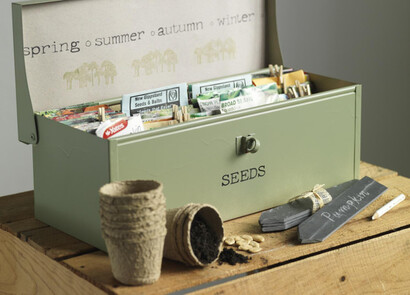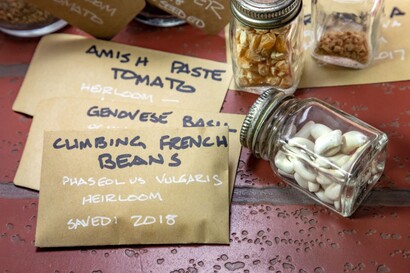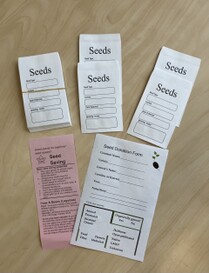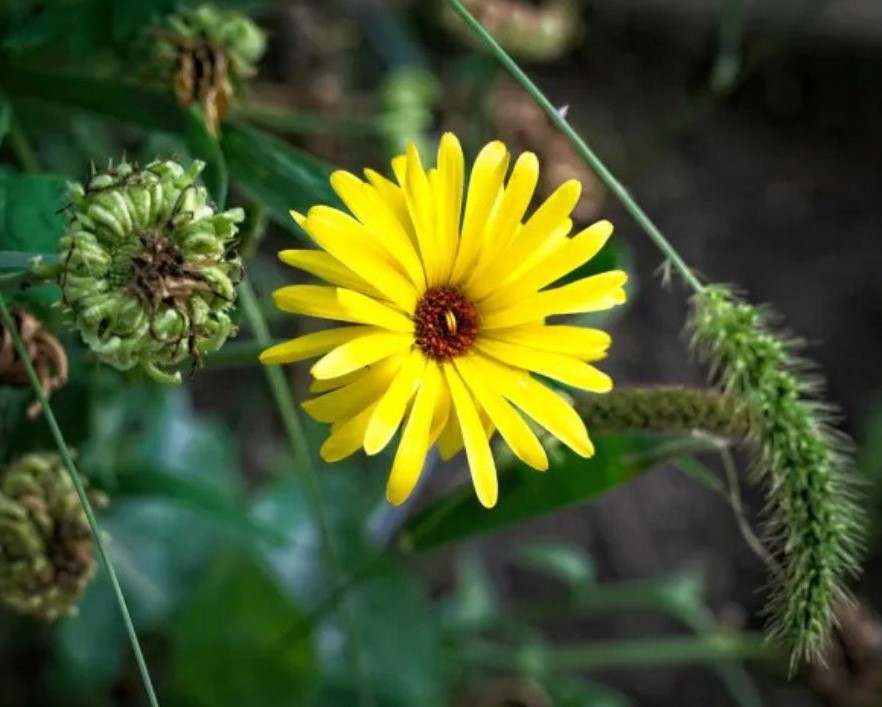Save Seeds! You can do it!
Why Save Seeds?
Humans have been saving seeds for more than 12,000 years. Recently, however, much seed-saving knowledge along with significant biodiversity has been lost due to the prevalence of genetically modified varieties of plants (GMO’s) whose seeds cannot be saved for re-planting, and large-scale monoculture. We encourage Seed Library users to follow the Safe Seed Pledge.
Biodiversity in food and agriculture increases the resilience of human and other natural communities. By saving our own seeds, especially open-pollinated and heirloom varieties, and sharing them with our community, you participate in one of nature’s greatest projects: preserving the cornucopia of lifeforms on Earth!
Read more about the importance of seed saving here.
How to Save and Store Seeds
It's best to start with open pollinated plants if you are just getting started with saving seeds. Open pollinated seeds will grow to be the same as the parent plants provided they do not cross-pollinate with another variety. F1 hybrids on the other hand, are two varieties which were cross-pollinated to create a new variety with certain desirable traits. These seeds likely will not produce plants that resemble the parent plant and may not grow true to type.
Some of the easiest vegetables to save seeds from in the northeast include beans, lettuce, peas, tomatoes, and peppers. Flowers whose seeds are easy to save include marigold, zinnia, morning glory, cleome, nasturtium, poppy, snapdragon, and sunflowers, among others.
Properly storing seeds over the winter will help ensure that the seeds will sprout come spring. Collect fully mature seeds from healthy plants, and if possible, harvest seeds from several different plants to help ensure genetic diversity. Make sure seeds are completely dry before storing to avoid mildew. Store seeds in jars or envelopes and place in a dark, dry, cool area protected from pests.
For more information and how-to videos, check out Seed Savers Exchange seed saving and storage page. And check out the handouts and links on the right side of this page.
How to Give Seeds Back to the Seed Library

We encourage and welcome local gardeners to save enough seeds for your next-year's garden and to give back to the Seed Library to share with other gardeners.
There are some simple steps you will need to follow to donate seeds from your garden to the South Burlington Seed Library. There are easy seed donation forms for your use located with the Seed Library on the second floor.
- Seeds must be non-GMO and non-hybrid so they will grow true the next year.
- Dry seeds well.
- Package each type of seed in its own bag or envelope.
- Each package MUST have the following information clearly marked:
- Plant type and variety (example: Tomato, Brandywine, or Lettuce, buttercrunch)
- The date the seed was collected (month and year is fine).
- Source of the seed (Can be “local gardener”, or the name of the seed company if commercial seeds).
- Is the plant an annual or perennial?
- Was the seed grown using organic methods?
- Is the seed open-pollinated, heirloom, non-GMO, or unknown?
The Seed Library will accept donations of leftover commercial seeds packets as long as they are non-GMO, non-hybrid, and not more than 2 years old.

